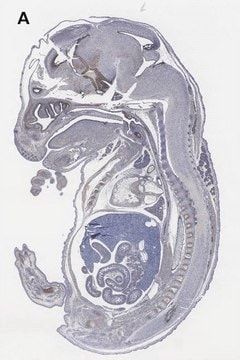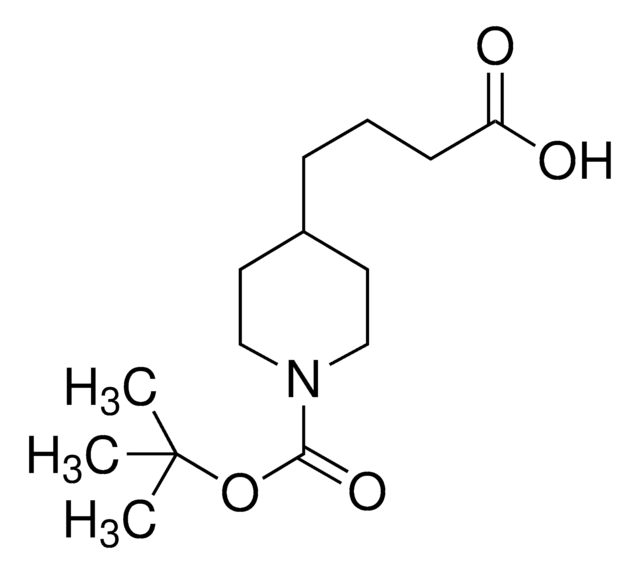MABE1795
Anti-PP4C Antibody, clone 7B5
clone 7B5, from mouse
Synonyme(s) :
Serine/threonine-protein phosphatase 4 catalytic subunit, EC: 3.1.3.16, Pp4, PPP4C, Protein phosphatase X, PP-X
About This Item
Produits recommandés
Source biologique
mouse
Forme d'anticorps
purified immunoglobulin
Type de produit anticorps
primary antibodies
Clone
7B5, monoclonal
Espèces réactives
human
Réactivité de l'espèce (prédite par homologie)
bovine (based on 100% sequence homology), rat (based on 100% sequence homology), rabbit (based on 100% sequence homology)
Conditionnement
antibody small pack of 25 μL
Technique(s)
western blot: suitable
Isotype
IgG1κ
Numéro d'accès NCBI
Numéro d'accès UniProt
Modification post-traductionnelle de la cible
unmodified
Informations sur le gène
human ... PPP4C(5531)
Description générale
Spécificité
Immunogène
Application
Epigenetics & Nuclear Function
Qualité
Isotyping Analysis: The identity of this monoclonal antibody is confirmed by isotyping test to be mouse IgG1.
Description de la cible
Forme physique
Stockage et stabilité
Autres remarques
Clause de non-responsabilité
Vous ne trouvez pas le bon produit ?
Essayez notre Outil de sélection de produits.
Certificats d'analyse (COA)
Recherchez un Certificats d'analyse (COA) en saisissant le numéro de lot du produit. Les numéros de lot figurent sur l'étiquette du produit après les mots "Lot" ou "Batch".
Déjà en possession de ce produit ?
Retrouvez la documentation relative aux produits que vous avez récemment achetés dans la Bibliothèque de documents.
Notre équipe de scientifiques dispose d'une expérience dans tous les secteurs de la recherche, notamment en sciences de la vie, science des matériaux, synthèse chimique, chromatographie, analyse et dans de nombreux autres domaines..
Contacter notre Service technique







